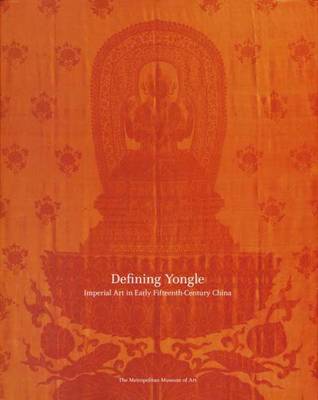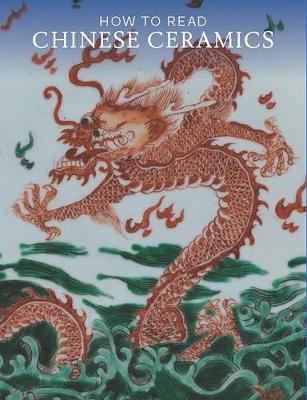Metropolitan Museum of Art
3 total works
The Yongle Emperor (1403-1424) was considered the most powerful, effective, and extravagant ruler of the Ming dynasty (1368-1644). Major military campaigns and unprecedented maritime expeditions marked his reign. Yongle is also credited with moving the capital from the south to the northern capital of Beijing, establishing the Forbidden City. In Beijing, Yongle inherited the imperial workshops instituted by the Mongol rulers of the preceding Yuan dynasty (1279-1368). The superb sculptures, lacquers, metalwork, ceramics, textiles, and ivories produced during Yongle's reign show the following influences: Islamic metalwork and glass on porcelains, and Tibetan Buddhist motifs on decorative arts and sculpture. As this book demonstrates, the art of this phase of the Ming dynasty clearly had a seminal role in the development of later Chinese decorative arts. Exhibition schedule: The Metropolitan Museum of Art, 1 April to 10 July 2005
The Metropolitan Museum's collection of Chinese Buddhist and Daoist sculpture is the largest in the Western world. In this lavish, comprehensive volume, archaeological discoveries and scientific testing and analysis serve as the basis for a reassessment of 120 works ranging in date from the fourth to the twentieth century, many of them previously unpublished and all of them newly and beautifully photographed. An introductory essay provides an indispensable overview of Buddhist practices and iconography--acquainting us with the panoply of past, present, and future Buddhas, bodhisattvas, monks and arhats, guardians and adepts, pilgrims and immortals--and explores the fascinating dialogue between Indian and Chinese culture that underlies the transmission of Buddhism into China.
In addition to detailed individual discussions of fifty masterpieces--a heterogeneous group including portable shrines carved in wood, elegant bronze icons, monumental stone representations, colorful glazed-ceramic figures, and more--the catalogue presents a ground-breaking survey of the methods used in crafting the sculptures. A second introductory essay and several technical appendices address the question of how early Chinese bronzes, as opposed to those from Gandhara and other westerly regions, were cast; the construction methods used for wood sculptures in China, notably different from those used in Japan; the complex layers of color and gilding on works in all media and their possible significance; and the role of consecratory deposits in wood and metal sculptures. A final appendix publishes the results of an intensive study of the wood material in the collection, classifying every sculpture by the genus of its wood and including a section of photomicrographs of each wood sample--an invaluable resource for researchers continuing to study works of this genre.
As illuminating for new enthusiasts of Chinese Buddhist art as for scholars and connoisseurs, Wisdom Embodied is a glorious tour of the Metropolitan's unparalleled collection, certain to earn its place as a classic in the field. (This title was originally published in 2010.)
In addition to detailed individual discussions of fifty masterpieces--a heterogeneous group including portable shrines carved in wood, elegant bronze icons, monumental stone representations, colorful glazed-ceramic figures, and more--the catalogue presents a ground-breaking survey of the methods used in crafting the sculptures. A second introductory essay and several technical appendices address the question of how early Chinese bronzes, as opposed to those from Gandhara and other westerly regions, were cast; the construction methods used for wood sculptures in China, notably different from those used in Japan; the complex layers of color and gilding on works in all media and their possible significance; and the role of consecratory deposits in wood and metal sculptures. A final appendix publishes the results of an intensive study of the wood material in the collection, classifying every sculpture by the genus of its wood and including a section of photomicrographs of each wood sample--an invaluable resource for researchers continuing to study works of this genre.
As illuminating for new enthusiasts of Chinese Buddhist art as for scholars and connoisseurs, Wisdom Embodied is a glorious tour of the Metropolitan's unparalleled collection, certain to earn its place as a classic in the field. (This title was originally published in 2010.)
Chinese ceramics are among the most significant and widely collected decorative arts produced anywhere in the world, with a history that spans millennia. Despite the saturation of Chinese ceramics in global culture—in English, the word “china” has become synonymous with “porcelain”—the function of these works and the meaning of their often richly decorated surfaces are not always readily apparent.
This new installment in the successful How to Read series enlightens readers on Chinese ceramics of all kinds, using highlights from the outstanding collection of The Metropolitan Museum of Art as a teaching tool. Accessible to a general audience and written by an expert on the subject, this book explains and interprets 40 masterworks of Chinese ceramics. The works represent a broad range of subject matter and type, from ancient earthenware to 20th-century porcelain, and from plates and bowls to vases and sculptural figures. Lavish illustrations showcase these stunning works and the decorations that adorn them, including symbolic scenes, flowers, and Buddhist and Chinese historical figures.
Published by The Metropolitan Museum of Art/Distributed by Yale University Press
This new installment in the successful How to Read series enlightens readers on Chinese ceramics of all kinds, using highlights from the outstanding collection of The Metropolitan Museum of Art as a teaching tool. Accessible to a general audience and written by an expert on the subject, this book explains and interprets 40 masterworks of Chinese ceramics. The works represent a broad range of subject matter and type, from ancient earthenware to 20th-century porcelain, and from plates and bowls to vases and sculptural figures. Lavish illustrations showcase these stunning works and the decorations that adorn them, including symbolic scenes, flowers, and Buddhist and Chinese historical figures.
Published by The Metropolitan Museum of Art/Distributed by Yale University Press


